Cross Street Backlot Artifacts
-
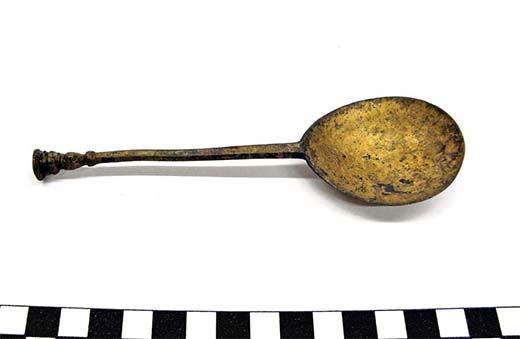
Spoon - Latten (an alloy of brass). This style of serving spoon was made in the 17th century. The three-spooned mark identifies the spoon as being of English origin; the exact details and date on the mark are unfortunately indecipherable.
-
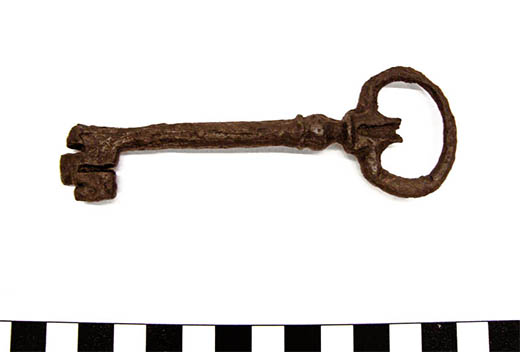
Cast iron door key.
-
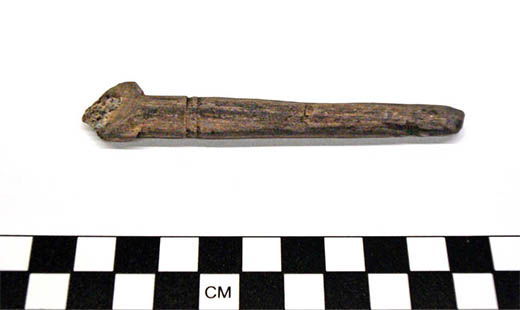
Handle - Wood
-
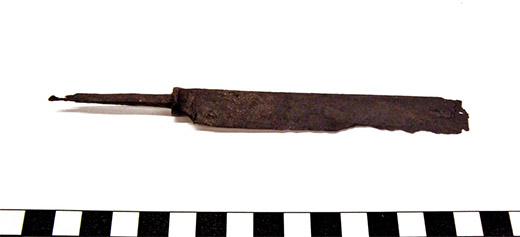
Knife Blade - Iron
-

Ointment Pot - Tin-glazed earthenware. This footed fragment is one side of a small, square pot that once had a matching removable lid.
-
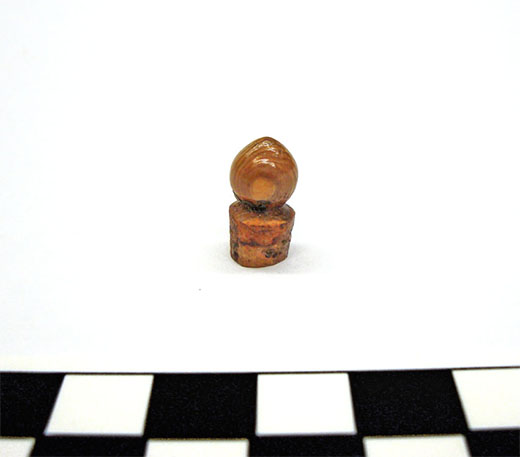
Smaller Stopper - Horn
-
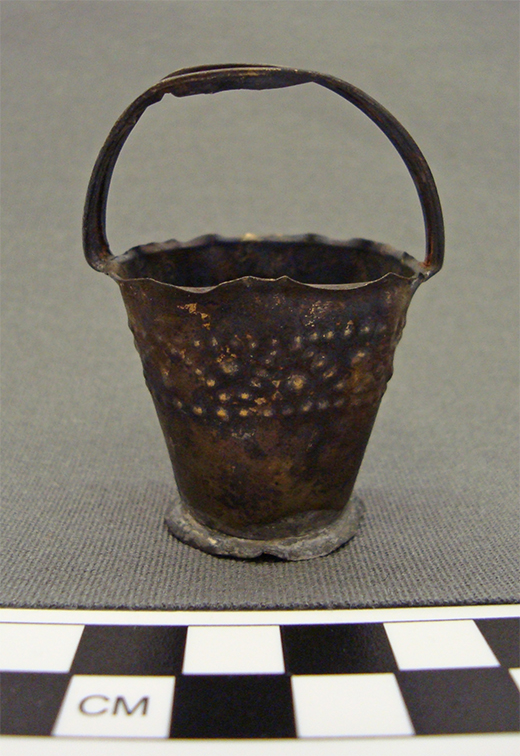
Pin Cushion - Copper alloy. This miniature bucket held a small cloth bag filled with horse hair or hay to serve as a pin cushion.
-
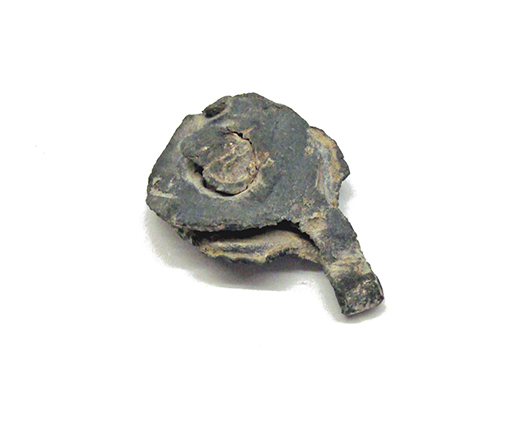
Bale Seal - Lead. Bale seals were used to seal a bale of cloth.
-
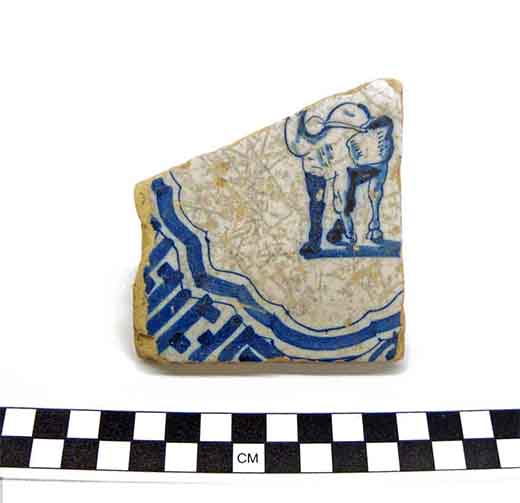
Architectural tile - Tin-glazed earthenware. These decorative tiles generally surrounded fireplace openings. This tile depicts a camel carrying heavy bundles. The Chinese style "Wan Li" corner motif was commonly used on English tiles manufactured between 1600 and 1650.
-
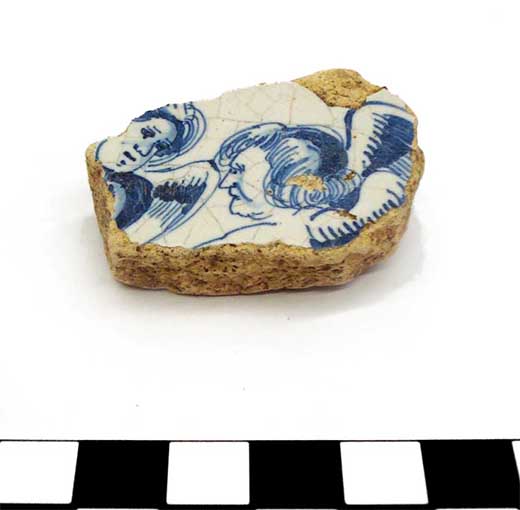
Architectural tile - Tin-glazed earthenware. These decorative tiles generally surrounded fireplace openings. Dutch and English painters occasionally decorated tiles with scenes from the New Testament. This tile depicts a Biblical scene of two angels.
-
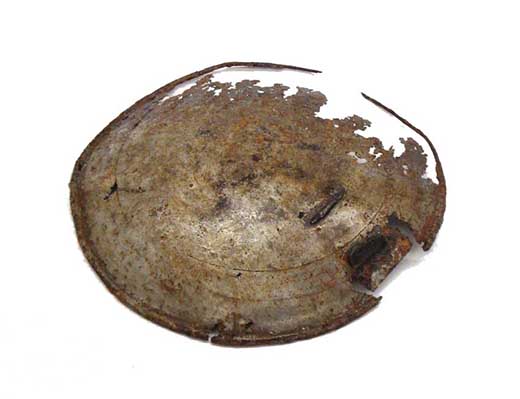
Tankard Lid - Pewter
-
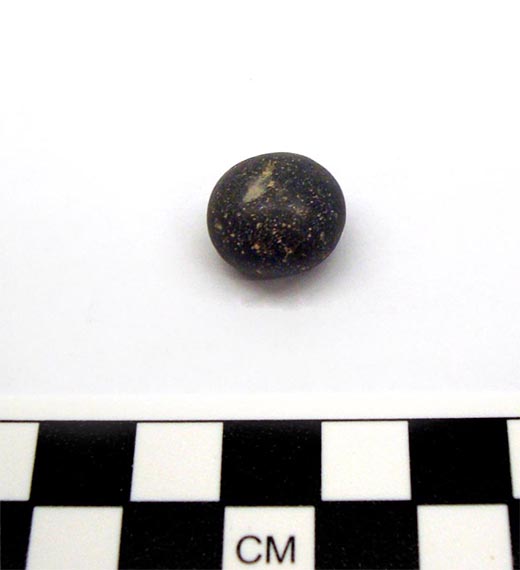
Gaming piece - Stone
-
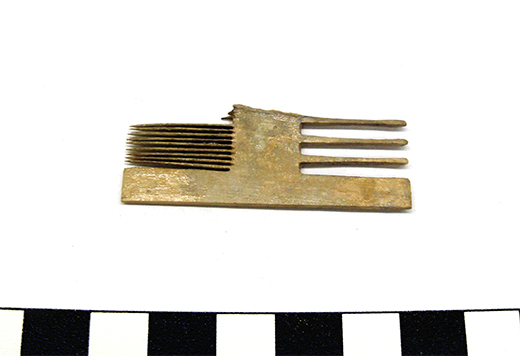
Hair comb - Bone. The larger-toothed comb was used for combing hair, while the fine-toothed side was used to remove lice.
-
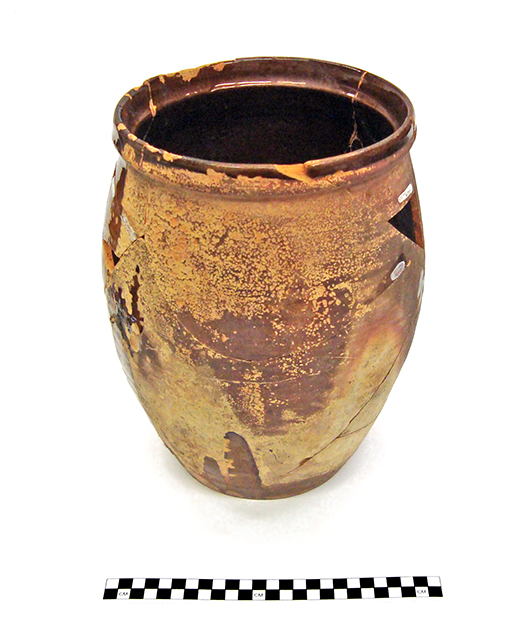
Jar - Lead-glazed redware. Archaeologists believe that Katherine Nanny Naylor may have thrown this jar out because it contained a bad batch of cherries. The nearly complete jar was recovered from the privy and the interior glaze is stained with acidic cherry juice.
-

Colonial sewing kit - Needle case (bone). Katherine, like most 17th-century women, probably was a competent seamstress and needle worker. Archaeologists found parts of Katherine's sewing kit, including pins, a pail-shaped pin cushion, a bone needle case, thimbles, and a wooden spool. As wealthy women, Katherine and her daughters probably focused on fancy needlework, leaving the dressmaking to servants.
-
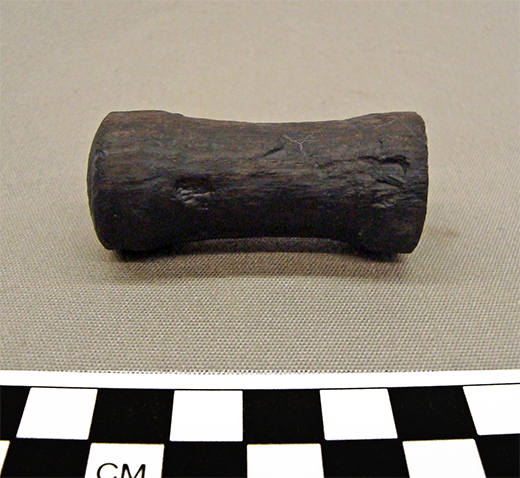
Colonial sewing kit - Thread spool (wood). Katherine, like most 17th-century women, probably was a competent seamstress and needle worker. Archaeologists found parts of Katherine’s sewing kit, including pins, a pail-shaped pin cushion, a bone needle case, thimbles, and a wooden spool. As wealthy women, Katherine and her daughters probably focused on fancy needlework, leaving the dressmaking to servants.
-
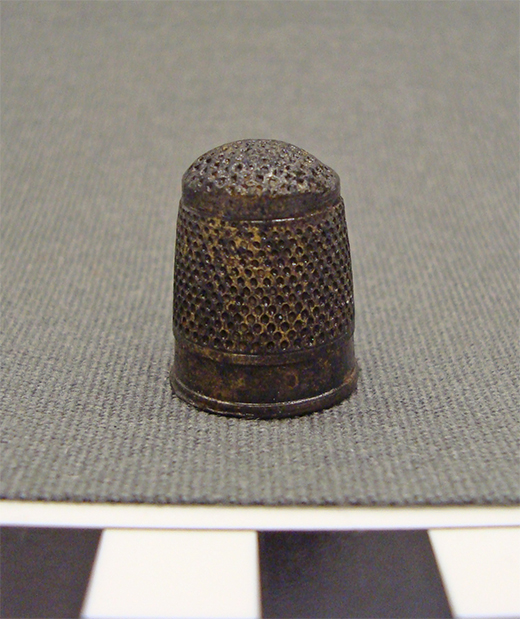
Colonial sewing kit - Thimble (copper alloy). Katherine, like most 17th-century women, probably was a competent seamstress and needle worker. Archaeologists found parts of Katherine’s sewing kit, including pins, a pail-shaped pin cushion, a bone needle case, thimbles, and a wooden spool. As wealthy women, Katherine and her daughters probably focused on fancy needlework, leaving the dressmaking to servants.
-
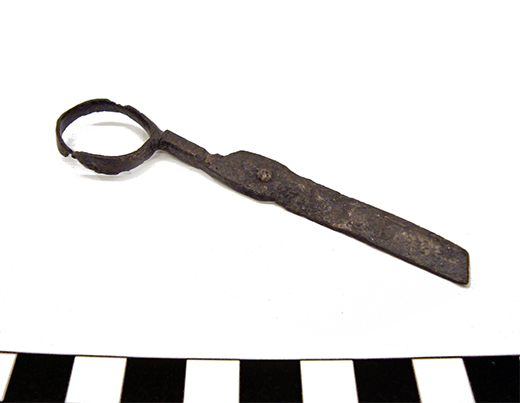
Colonial sewing kit - Scissors (iron). Katherine, like most 17th-century women, probably was a competent seamstress and needle worker. Archaeologists found parts of Katherine’s sewing kit, including pins, a pail-shaped pin cushion, a bone needle case, thimbles, and a wooden spool. As wealthy women, Katherine and her daughters probably focused on fancy needlework, leaving the dressmaking to servants.
-
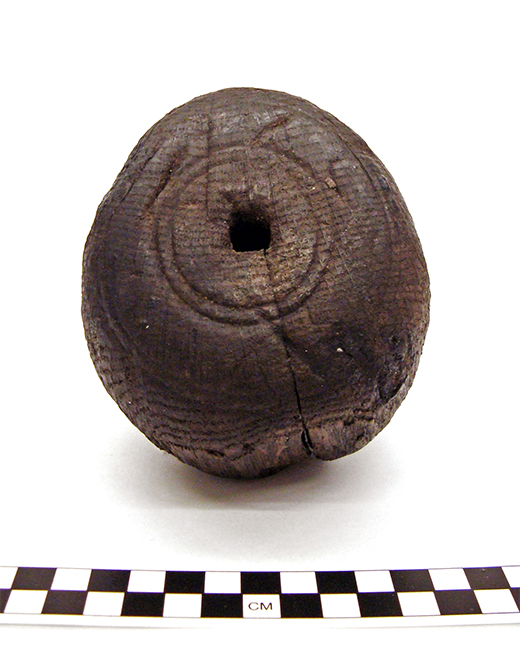
Lawn bowle - Oak. Late 17th century
-
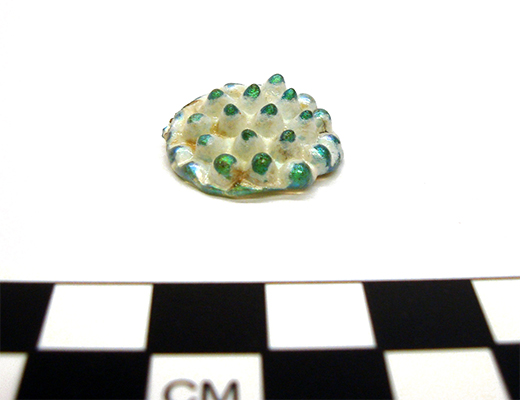
Glass prunt. A prunt is a blob of glass applied as decoration to the exterior of a vessel. This is a raspberry prunt from Holland and would have decorated a drinking glass.
-

Cowrie shell. Cowrie shells like this one are native to the Indian Ocean. These exotic objects may have been brought back as souvenirs.
-
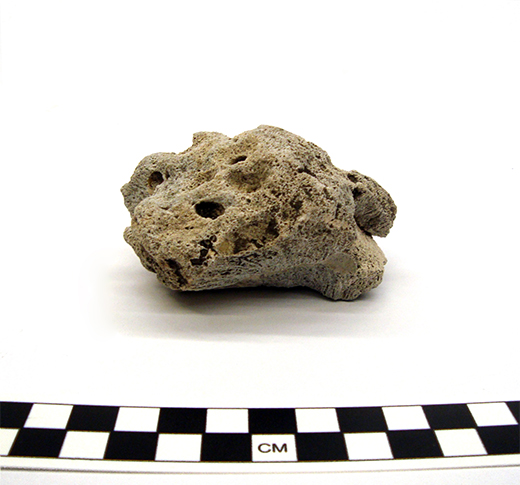
Coral. Coral was used as ballast on ships headed to Boston from the Caribbean.
-
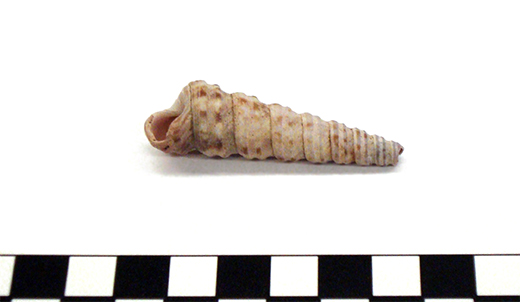
Shells like this one are native to the Indian Ocean. These exotic objects may have been brought back as souvenirs.
-
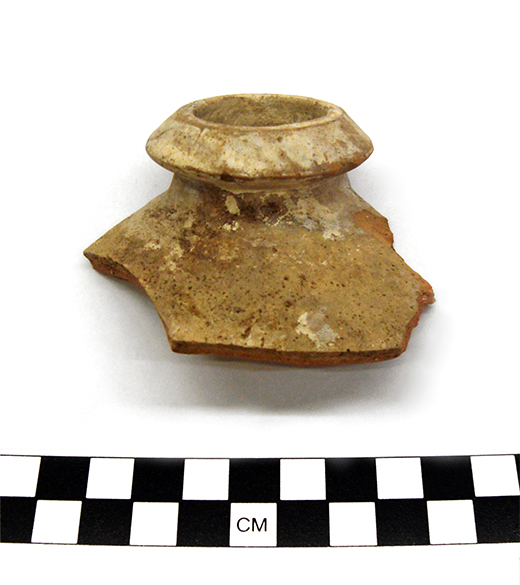
Iberian storage jars
-
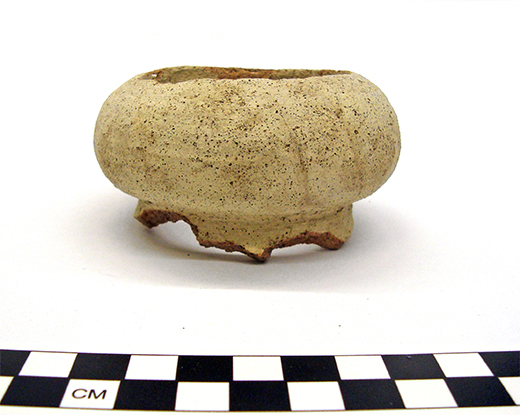
Iberian storage jars
-
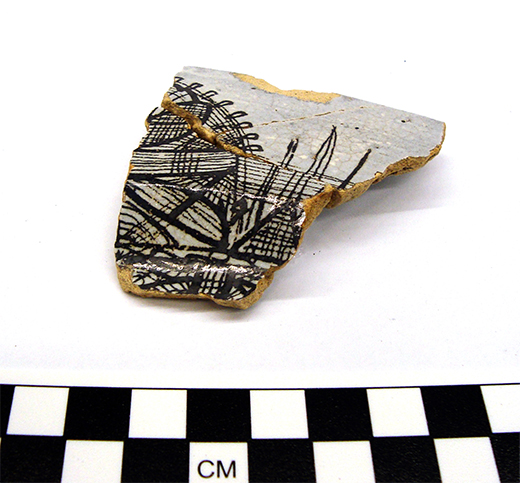
Portuguese tin-glazed earthenware plate
-
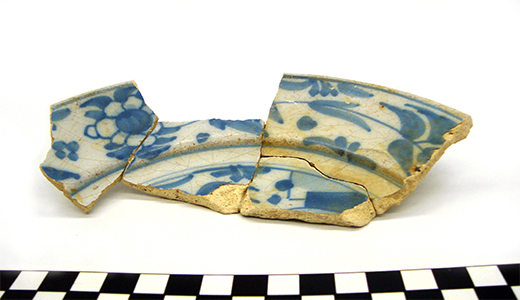
Portuguese tin-glazed earthenware plate
-
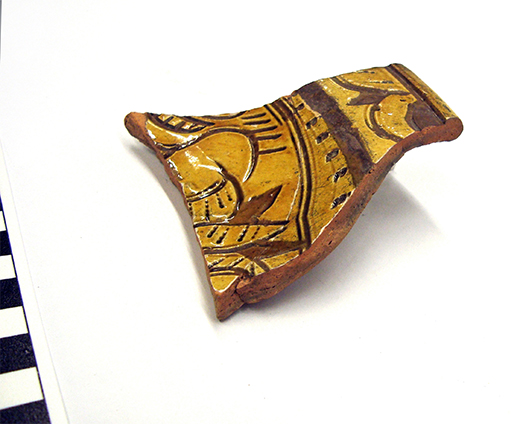
English sgraffito plate
-
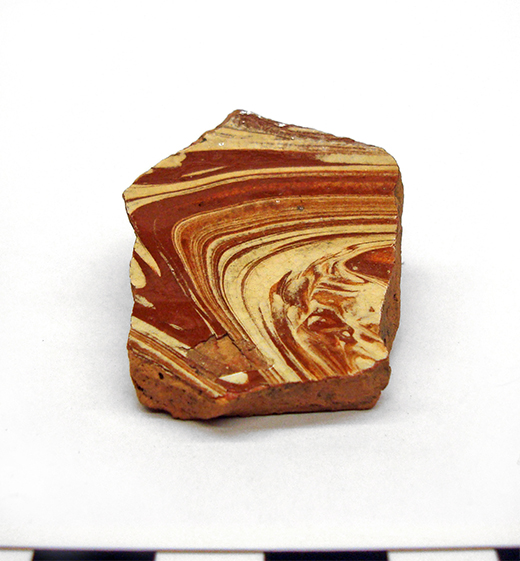
Italian red marblized slip-decorated plate
-
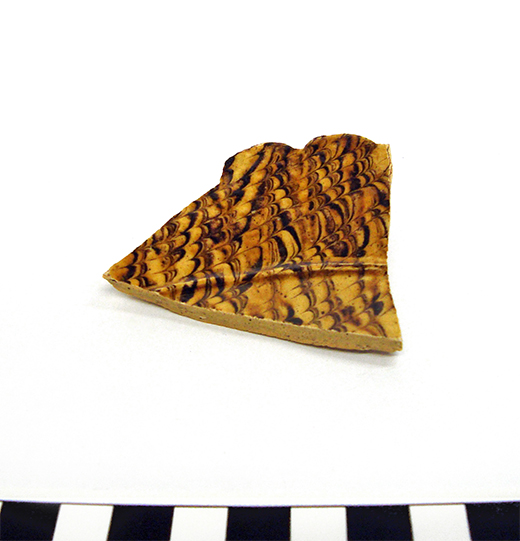
English Staffordshire plate
-
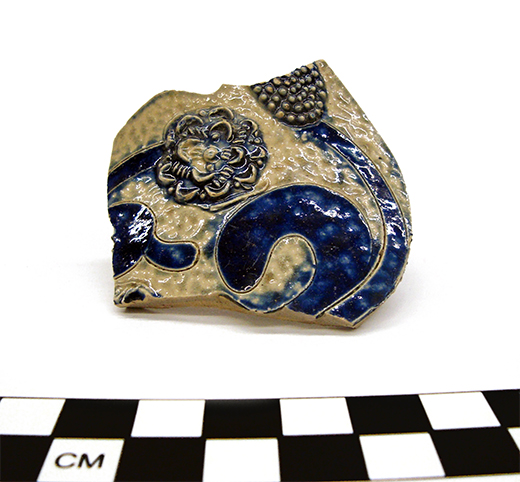
Globular mug, Rhenish stoneware with floral and sprigging
-
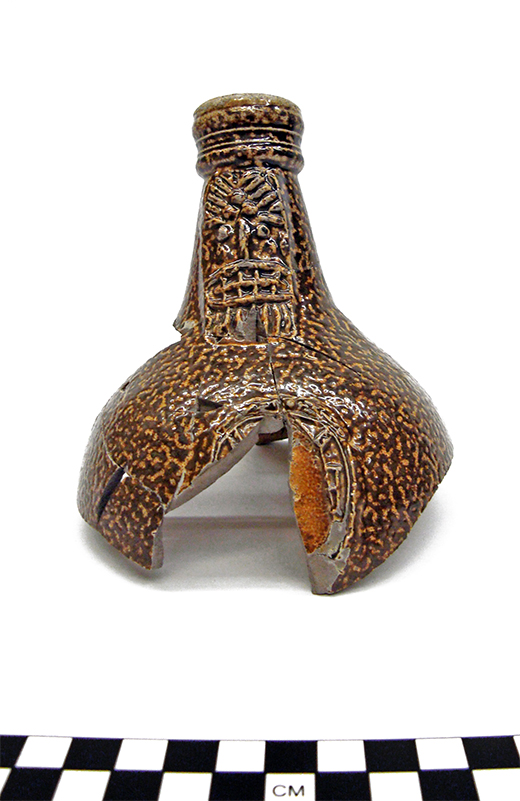
German salt-glazed stoneware Bartmann bottle
-

Straight pins - copper alloy
-

Straight pins - copper alloy
-
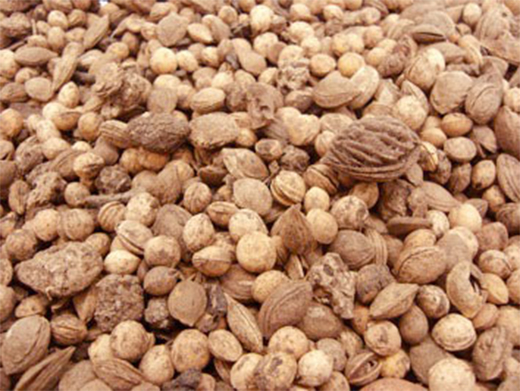
The Cross Street privy contained over a quarter of a million seeds. Over 95% were cherry and plum pits. Approximately 32 types of fruit seeds and pits were identified.